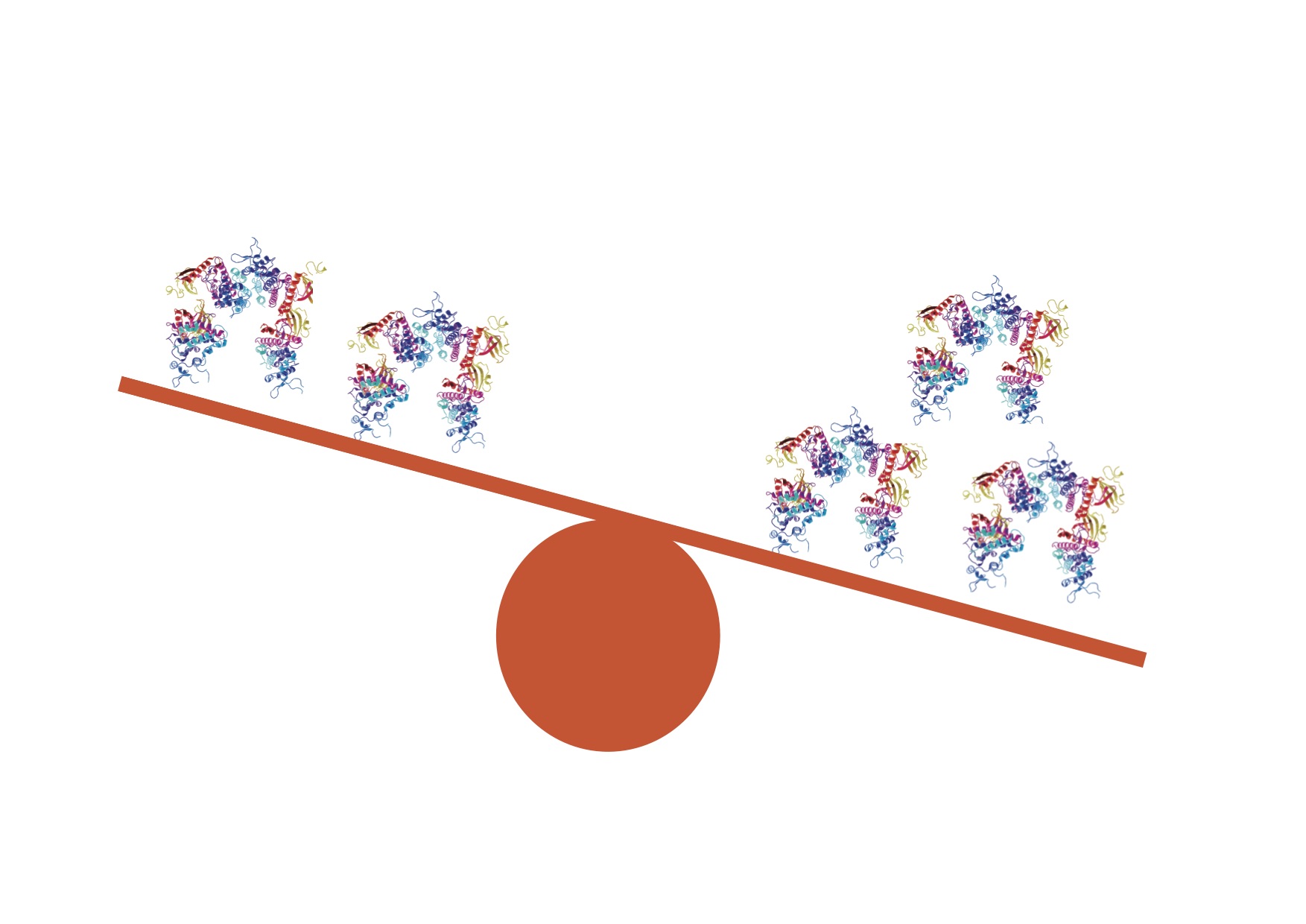Trisomy 21: research breaks new ground
Researchers at UNIGE and ETH Zurich have discovered that the symptoms of trisomy 21 are caused by the uncontrolled dysregulation of proteins in the cells.

An imbalance in the number of proteins is observed in cells with trisomy 21.© UNIGE
Down’s syndrome, also known as trisomy 21, is one of the most common genetic diseases. Researchers from the University of Geneva (UNIGE) and ETH Zurich, Switzerland, have recently analysed the proteins of individuals with trisomy 21 for the first time: the goal was to improve our understanding of how a supernumerary copy of chromosome 21 could affect human development. Published in the journal Nature Communications, the research shows that trisomy 21, far from only affecting the proteins encoded by the chromosome 21 genes, also impacts on the proteins encoded by the genes located on the other chromosomes. In fact, the cells are overwhelmed by the protein surplus generated by the triplicated genes, and cannot regulate the amount of proteins. These results provide new insight into Down’s syndrome and its symptoms based on the study of proteins, revealing the different outcomes of an excess of chromosome 21 on cell behaviour.
The symptoms of Down’s syndrome – or trisomy 21, the most common genetic disease – include facial dysmorphism, intellectual impairment, poor muscular tone and congenital heart disease. The syndrome results from the presence of three chromosomes 21, which explains why research until now has focused on analysing DNA and transcriptome (all the messenger RNAs synthesised from genes of our genome). “Nevertheless,” explains Stylianos E. Antonarakis, honorary professor in UNIGE’s Faculty of Medicine, “the proteins are highly informative molecules since they are more closely linked to the clinical signs of the syndrome. Studying them makes it possible to posit new hypotheses about the cellular mechanisms disturbed by trisomy 21”. However, analysing all the proteins from clinical samples is technically a very difficult task – which is why the UNIGE researchers joined forces with a team led by Professor Ruedi Aebersold from ETH Zurich, who is a world expert in proteome studies.
The scientists succeeded in quantifying 4,000 out of the 10,000 proteins synthesised by skin cells – a world premiere – using SWATH-MS, a new mass spectrometry technique developed by ETH Zurich. The protein differences between the cells of Down’s syndrome and a person without the genetic anomaly are low (1.5 times higher for the proteins produced by the chromosome 21 genes). They are difficult to detect with traditional techniques, meaning that it has been necessary to wait for an ultra-sensitive method to be developed in order to detect the tiny variations. “What’s more, the aim was only to analyse the protein variations due to the genetic anomaly, and not the variations that can be attributed to individual differences. So, we worked on fibroblastic cells from a pair of female twins who shared the same genetic background, except that one has trisomy 21 and the other doesn’t,” adds Christelle Borel, a researcher in the Department of Genetics and Development at UNIGE’s Faculty of Medicine.
Deficient self-regulation cellular mechanism discovered
A detailed examination of the twin’s samples revealed several major findings to improve our understanding of the impact of Down’s syndrome on cells. Significant quantitative variations were observed in the proteins that are not encoded exclusively from genes on chromosome 21 but that also from genes that map to other chromosomes. Trisomy 21 causes an overdose of mRNA and proteins that dysregulate the cellular functions of the affected individual. The researchers then observed a cellular mechanism for self-regulating protein production, which was capable of counteracting an unusual overabundance of proteins. Under normal conditions, this mechanism helps correct minor excesses and regulates the amount of protein needed by our cells. But, because of an extra chromosome 21, which itself encodes proteins, the cells are left with a surplus of proteins and the self-regulating mechanism is no longer able to control and restrict the quantity. “For the first time,” says Professor Antonarakis, “we have a comprehensive analysis of the proteins deregulated by trisomy 21, which may explain the causes of the different symptoms of Down’s syndrome”.
The UNIGE geneticists also found that trisomy 21 also affected the cell’s various sub-structures, especially the mitochondria, which are responsible for the cell’s energy processes. But here the problem is the very opposite: the proteins that make up the mitochondria are excessively diminished and affect their correct functioning. The last result was validated with samples from other patients with trisomy 21: it showed that the type of proteins affected is also extremely important for understanding what causes the symptoms. “In general terms, protein turnover is accelerated in the trisomic cells. Then there are two kinds of proteins,” says Christelle Borel. “The first assemble as a complex to perform a precise function. The second, on the other hand, operate alone. We discovered that it is the proteins in complexes that are degraded most quickly in the trisomic cells, which is something that could not have been discovered before.” In fact, the proteins that assemble regulate mutually and naturally by forming the complexes, meaning their surplus is controlled. By contrast, there is an excess of solitary proteins that are not eliminated by the cell because they are functional alone.
New perspectives for research in medical genetics
The UNIGE geneticists, in collaboration with the ETH Zurich experts, have taken a major step forward in our understanding of trisomy 21 by going beyond the gene and transcriptome to reach proteins. These initial discoveries, together with the demonstration of the technical feasibility, open new perspectives for research, since the methodology can be applied to other genetic diseases. “We now need to find which of the deregulated proteins are responsible for each particular symptom of Down’s syndrome. Then we need to see if new discoveries are possible for other types of cells such as neurons or heart cells, severely affected by trisomy 21,” concludes Professor Antonarakis.
28 Nov 2017
